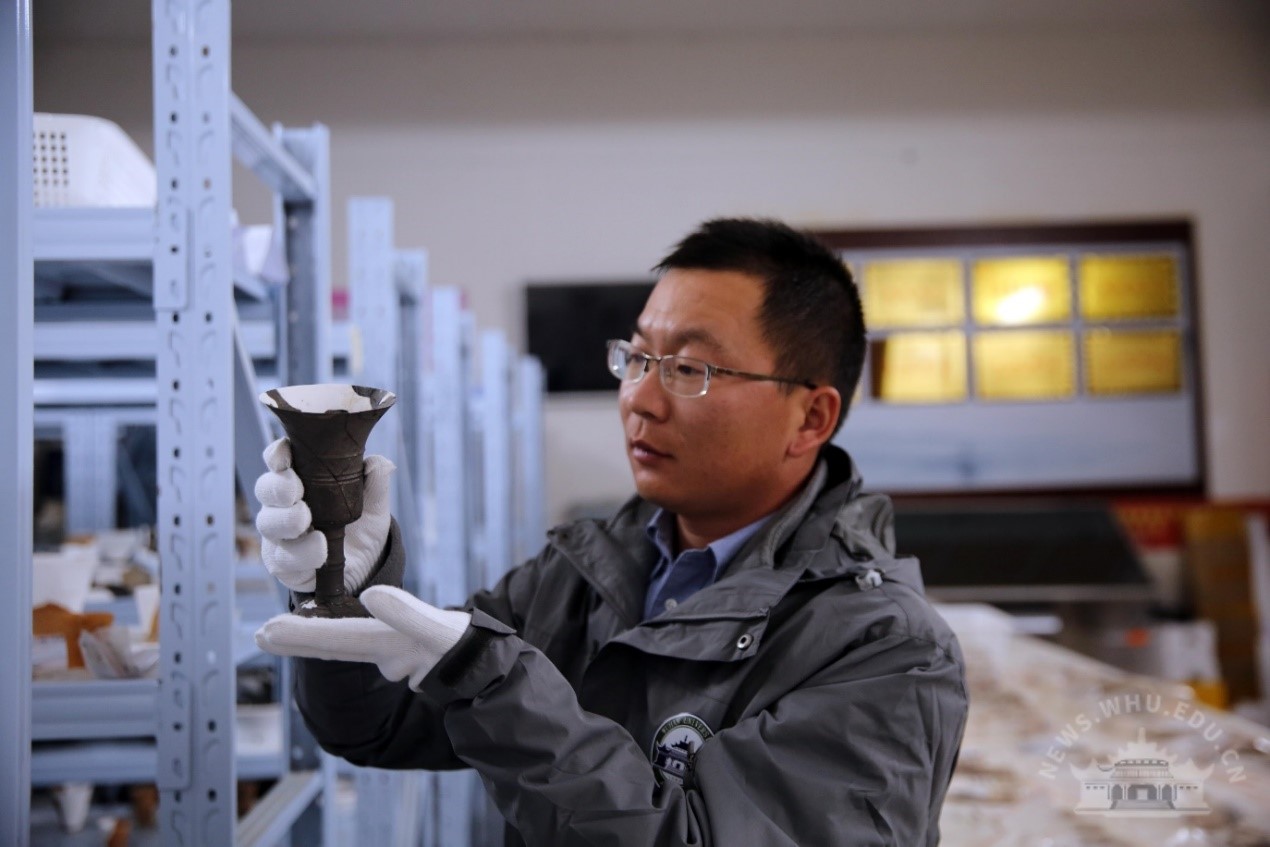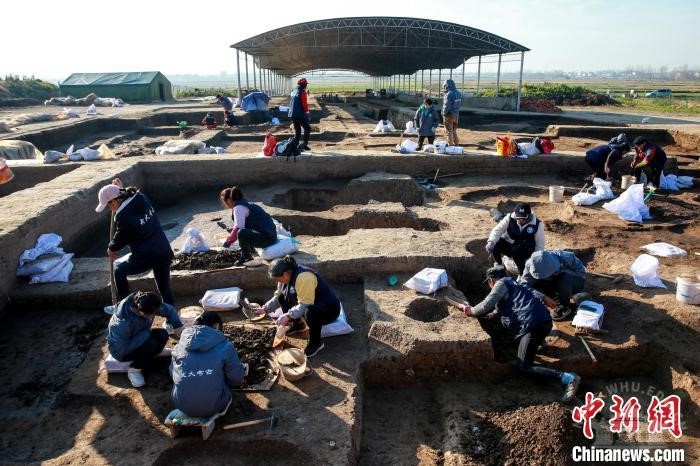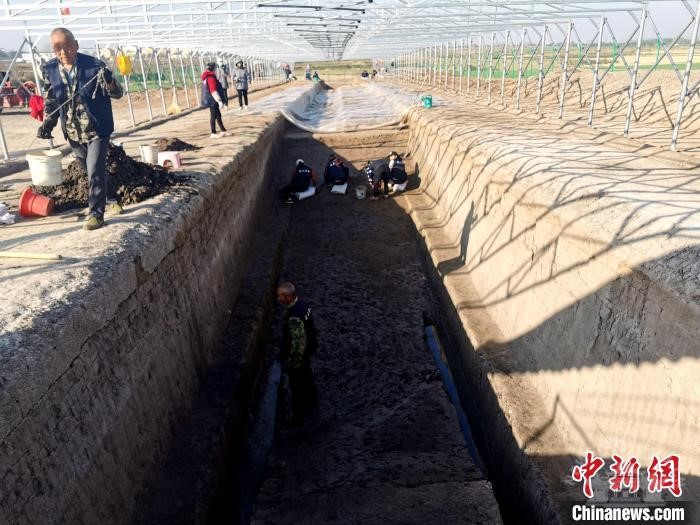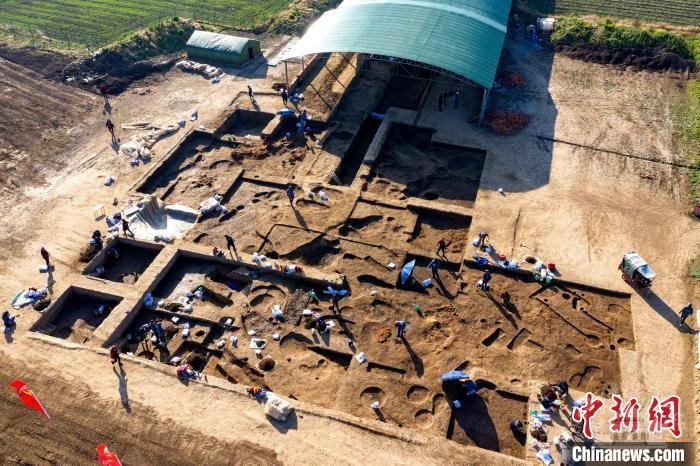After excavating for over a year, a large amount of pottery, stone ware and some jade ware was found in the Fenghuangzui site located in Xiangyang City, Hubei Province. A recently unearthed ‘eggshell pottery cup’, in particular, has amazed archeologists.

The newly-excavated ‘eggshell pottery cup’ presented by an archeologist
Dr. Shan Siwei, the leader of the archaeological team of Wuhan University at the Fenghuangzui site, announced on December 5 that the newly-unearthed pottery cup was intact and exquisite, resembling a modern goblet. The pottery cup is technically termed ‘eggshell pottery cup’ due to its thin clay body. Rather than being a local product of the middle reaches of the Yangtze River, the cup points to a possible origin in Longshan culture of Shandong Province as suggested by its shape and crafting techniques. Eggshell pottery cups are generally regarded as a ritual ware of the nobility that was not meant for everyday use. It suggests extensive and high-level exchanges between Xiangyang and Shandong Province during prehistoric times.

Pottery unearthed in Fenghuangzui site, Xiangyang
Located in the middle reaches of the Han River, the Fenghuangzui site spans Qianwang and Yanying, two villages of Longwang Town, Xiangzhou District of Xiangyang City. The site measures about 140,000 square meters in a roughly square shape, and the overall area, including peripheral clusters, covers around 500,000 square meters. After careful examination on unearthed items, such as tripod caldrons, jars, standing vessels, cups, trays with ring foot, barrels, pitchers with three legs and urns, archeologists have confirmed that the site originated 5,200 to 3,900 years ago and experienced major cultural phases in the form of Qujialing culture, Shijiahe culture and Meishan culture.

Excavation at Fenghuangzui site of Xiangyang
Since August 2020, the Department of Archaeology of Wuhan University has cooperated with Hubei Provincial Institute of Cultural Relics and Archaeology, Xiangyang Museum and Xiangzhou Museum on the excavation of the Fenghuangzui site for heritage protection and heritage park construction.

Ancient river channels newly excavated
The ancient city walls and the moat have been previously excavated and a large number of precious cultural relics have been unearthed at the site, said Shan Siwei. Recent excavation includes a circular earth foundation covering about 1,000 square meters, similar to those of the buildings in the Temple of Heaven in Beijing. The earth foundation for large buildings is whitewashed with multiple layers. The exquisite eggshell pottery cup excavated here is less than 1 millimeter thick throughout most of its body.

An aerial view of Fenghuangzui site, Xiangzhou District, Xiangyang City
Based on preliminary analysis, the newly-excavated river channel inside the city walls is considered to be connected with the moat outside. This is evidence, notes Shan Siwei, that the site was built with plans and organized efforts and it might have been an important traffic center between the northern and southern parts of China.
Photographers: Hu Chuanlin&Yang Dong
Rewritten by 王钦圆
Editted by: Zhang Ruoxi, Sylvia and Hu Sijia